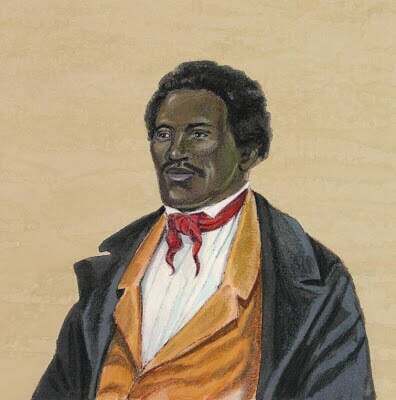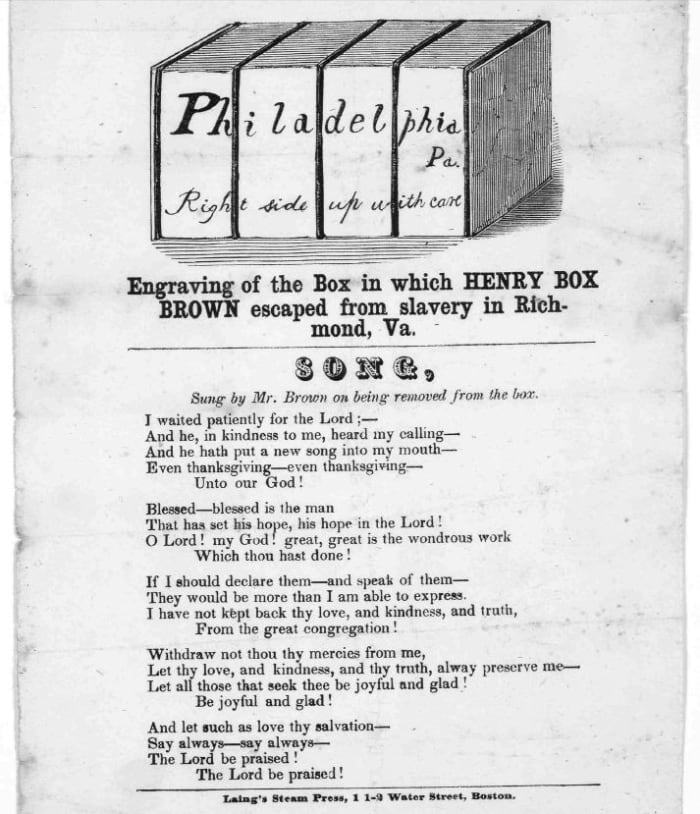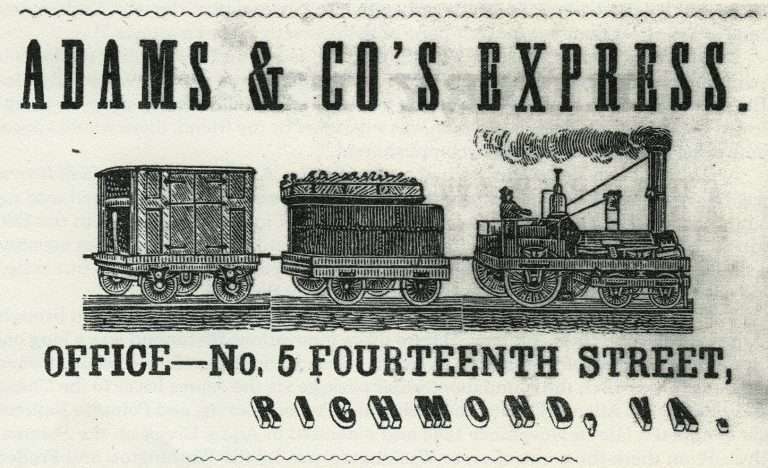RICHMOND, Va. -- Near the intersection of Canal and 15th streets in downtown Richmond sits one of the most peculiar attractions in all of Virginia.
The simple metal box, frozen in time, is a low-key landmark that honors one of the most daring escapes in American history.
The escape was orchestrated by a Virginia man hungry to taste liberty for the first time.
Henry Brown was born into slavery in Louisa County around 1816.

Historian Jeffrey Ruggles said Brown was a married father of three who sang in a church choir.
“He came from a humble beginning. There was nobody quite like him on the scene,” Ruggles said. ”He was living in Richmond and working in a tobacco factory.”
But in 1849, one event sent Brown reeling. His wife Nancy was sold to an owner in North Carolina. It was a moment of despair that altered his life forever.
“When his wife was sold, the rules were that the children went with the wife so he lost his whole family," Ruggles said.
Brown, 33, bid his loved ones farewell forever.

Freedom At Any Cost
Mary Lauderdale, with the Black History Museum and Cultural Center, said a desperate Brown then made a bold decision to find freedom at any cost.
“He grabbed her hand and they walked together to the edge of town and there was nothing he could do about it,” Lauderdale said. “He had to take the chance.”
Brown would not run away under the cover of darkness or choose violence. His plot involves deception and risk.
Brown, with the help of two friends, a White Shoemaker and a freed Black man, climbed into a crate on March 29.
”There was a shipping service called Adams Express,” Ruggles said. “It was a very dangerous plan.”
Brown attempted to mail himself to freedom in Pennsylvania.

“It wasn’t guaranteed that he would be successful but he stuck it out,” Lauderdale said.
The three-foot by two-and-a-half foot box was nailed shut with the 5’8’’, 200-pound father inside.
"Even when he was put on his head he didn’t cry or make any sounds. He said he just prayed,” Ruggles said.
Karen Sherry, with the Virginia Museum of History and Culture, said Brown endured unimaginable hardship squeezed in the wooden box.
“Brown described at one point he passed out because he was upside down and the blood was flowing to his head,” Sherry said. ”He shipped himself as if he were a piece of cargo as if he were a package. And legally under slavery he a human being was considered property.”

Harry Kollatz Jr. historian and senior writer with Richmond Magazine said the crate was transferred from a train to a boat and a wagon. The trip took nearly 27 hours.
“It can’t be underestimated how desperate he was to get out of Richmond by any means necessary,” Kollatz said. “To be in that confined space for as long as he was, frankly, it beggars the imagination. The whole thing was an astounding physically and psychologically feat to will himself to do this.”
Brown remained resilient during each leg of his nearly 300-mile journey.
“The things you would normally do in 24 hours being cramped inside of a dark box scared the whole time that you might be found out,” Lauderdale said. “I can’t imagine half of the emotions that went through him.”
The special delivery arrived at the Anti-Slavery Society in Philadelphia the next day.
Ruggles, the author of "The Unboxing of Henry Brown," said the escapee's friends on the outside fear the worst.
"It must have been an incredible moment to know that such a daring and dangerous act ended up being successful. And they were able to save one man from slavery,” Sherry said.“He very quickly became a celebrity.”

Henry’s getaway caused a sensation.
“So the story of a slave having escaped in a box got out. It ended up in the New York papers and all the papers reproduced it so it became known that somebody escaped in a box,” Ruggles said.
Brown traveled the abolitionist circuit across the northeast lecturing crowds on the evils of slavery. But he was not out of danger.
The Fugitive Slave Law of 1850 forced Brown to move to England where he remarried and reinvented himself as a performer and magician.
“Once Brown was out in public he took to it,” Ruggles said.
For 25 years, customers in the UK clamored to hear Box Brown retell his disappearing act from bondage. His story left audiences speechless.
”He carried the original box with him on tour and he would climb in the box in shows,” Ruggles said.
Brown published two autobiographies before returning to North America in 1875.
”I think one thing you could say about Henry Brown is that he thought outside the box," Ruggles said. "He did things other people hadn’t done."

A rare 1850 lithograph of Henry Brown emerging from his box survives in the archives at the Virginia Museum of History and Culture.
“It was one of the most ingenious and famous acts of self-emancipation," Sherry said. "He likened it to a resurrection and in fact that is the title of this print. The Resurrection of Henry Box Brown.”
Brown and his family eventually settled in Toronto and never returned to Richmond.
“This was his life. He was trying to save himself,” Kollatz Jr. said. “Save himself and get to freedom.”

Henry Brown died on June 15, 1897, at 82 years old.
“Even though he got his freedom, he lost a lot in his lifetime,” Lauderdale said.
Brown's great escape still reverberates across the centuries.
“I think it is an incredibly powerful story to underscore the intense desire for liberty among enslaved African Americans,” Sherry said.

Henry Box Brown is a man who risked so much to set himself free.
“He made his own way," Ruggles said. “Many of the things he did. He created a path for something that wasn’t there. He just made the path.”
The City of Toronto honored Henry Box Brown in February 2024 by renaming the street in the neighborhood where he lived with his family in his honor.






